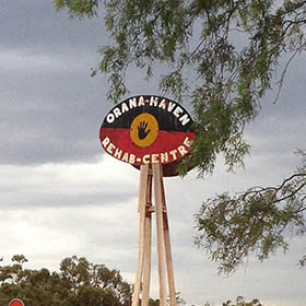
NDARC has been invited to undertake research in partnership with NSW Aboriginal drug and alcohol Residential Rehabilitation Services. This research is unique in being embedded into the routine delivery of their services. It is adopting a community-based participatory approach to define current practice, co-design an evidence-based data collection system and model of care, examine the potential for follow-up care approaches and establish a framework to facilitate high quality economic evaluation.
Dr Anton Clifford
University of Queensland
Dr Julaine Allan
Lyndon
Mr Norm Henderson
Orana Haven
Mr Alan Bennett
Orana Haven
Mr Joe Coyte
The Glen
Ms Di Edwards
Namatjira Haven
Ms Janet Curran
Maayu Maali
Mr Daniel Jeffries
Weigelli Centre
Ms Tania Bloxsome
Oolong House
The provision of Aboriginal residential rehabilitation spans over five decades in Australia. These services offer a multi-component approach for their clients, who typically have complex social, economic, housing, and legal difficulties. They also incorporate cultural dimensions, which aim to increase Aboriginal clients’ wellbeing and treatment outcomes. This project will build on this successful track record of service provision by developing methods of embedding high quality research into the routine delivery of their services. It is a unique partnership approach that is led by the experience and knowledge of Aboriginal service providers.
This study has six aims: i) to summarise current best evidence practice in Aboriginal residential rehabilitation services, based on a systematic review of the international literature; ii) to describe the demographic and treatment characteristics of clients of up to seven of the Aboriginal residential rehabilitation services in NSW, including whether these have changed over time; iii) to identify opportunities for increasing the use of best-evidence measures across all services; iv) to describe the process and outcome of working towards a standardised model of care; v) to examine the potential for follow-up care approaches; and vi) to establish a framework to facilitate high quality economic evaluation.
Mixed methods design. This project will adopt a community-based participatory approach and includes a systematic review of the international literature, quantitative analyses of routinely collected health service data, qualitative interviews with key stakeholders and the development of an economic evaluation framework.
- Ethics has been approved by AH&MRC and participating services have provided their consent.
- Further data collection and analysis currently being undertaken with participating services.
Our initial research has demonstrated the feasibility and acceptability of an Aboriginal-led, community-based participatory approach1. Consequently, we will apply this same approach to achieving the aims of the next phase of our research. The systematic review is close to completion (aim i). The examination of routinely collected data, and the analysis of those data, is underway (aims ii & iii). Qualitative interviews have been conducted to help delineate the current model of care delivered in at least one service (aim iv). The potential for follow-up approaches and establishing an economic evaluation framework will occur in 2017 (aims v & vi).
The key contribution of this body of research will demonstrate that partnerships between Aboriginal service providers and researchers are highly feasible, productive and acceptable. These partnerships will produce higher quality evidence than is possible if service providers and researchers are not well integrated, which will engender benefits for the services, for advancing academic knowledge and, most importantly, for clients of Aboriginal drug and alcohol residential rehabilitation services. It will provide higher degree research training for at least one Indigenous student.





